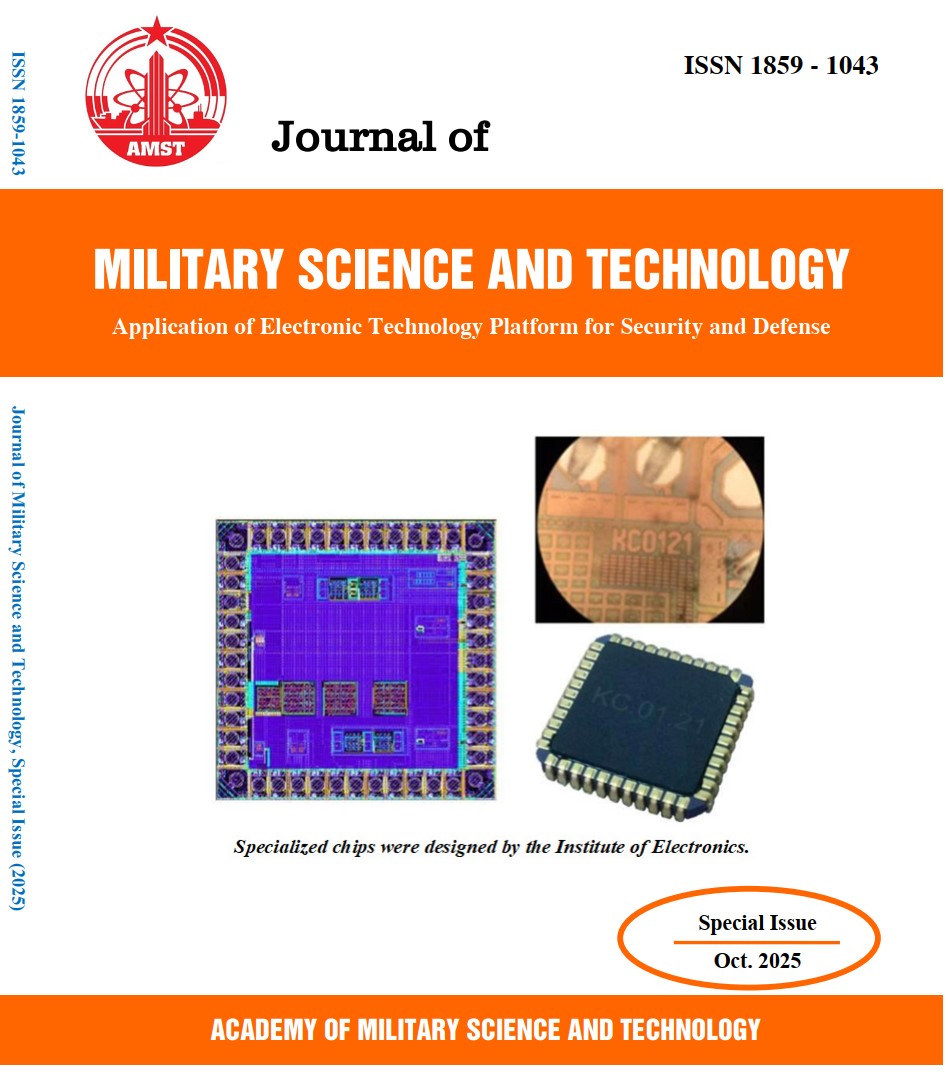Deep residual regression network for underwater acoustic source number estimation
200 viewsDOI:
https://doi.org/10.54939/1859-1043.j.mst.IITE.2025.91-98Keywords:
Underwater; Source number estimation; Deep learning; Residual network.Abstract
Source Number Estimation (SNE) is a crucial task in underwater acoustic array signal processing, as it significantly affects the performance of subsequent algorithms. Traditional methods, such as the Akaike Information Criterion (AIC) and Minimum Description Length (MDL), often perform poorly in challenging underwater environments, especially under low Signal-to-Noise Ratio (SNR) conditions, with a limited number of snapshots and complex noise structures. To tackle these issues, this paper presents an Eigenvalue-based Residual Regression Network (EResNet) designed for robust source number estimation. Comprehensive simulations conducted in various complex noise scenarios have shown that EResNet is notably effective. The results reveal that the proposed model achieves higher accuracy and demonstrates greater robustness compared to the AIC and MDL methods and other baseline neural network architectures.
References
[1]. J. Barabell, “Improving the resolution performance of eigenstructure-based direction-finding algorithms,” Proc. IEEE Int. Conf. Acoust., Speech Signal Process., pp. 336–339, (1983). DOI: https://doi.org/10.1109/ICASSP.1983.1172124
[2]. F. Gao and A. B. Gershman, “A generalized ESPRIT approach to direction-of-arrival estimation”, IEEE Signal Process. Lett., Vol. 12, No. 3, pp. 254–257, (2005). DOI: https://doi.org/10.1109/LSP.2004.842276
[3]. Qian, L. Huang, N. Sidiropoulos, and H. So, “Enhanced PUMA for direction-of-arrival estimation and its performance analysis,” IEEE Trans. Signal Process., Vol. 64, No. 16, pp. 4127–4137, (2016). DOI: https://doi.org/10.1109/TSP.2016.2543206
[4]. P. Stoica and A. Nehorai, “Performance study of conditional and unconditional direction-of-arrival estimation,” IEEE Trans. Acoust., Speech Signal Process., Vol. 38, No. 10, pp. 1783–1795, (1990). DOI: https://doi.org/10.1109/29.60109
[5]. M. Wax and T. Kailath, “Detection of signals by information theoretic criteria,” IEEE Trans. Acoust., Speech Signal Process., Vol. ASSP-33, No. 2, pp. 387–392, (1985). DOI: https://doi.org/10.1109/TASSP.1985.1164557
[6]. Nadler, “Nonparametric detection of signals by information theoretic criteria: Performance analysis and an improved estimator,” IEEE Trans. Signal Process., Vol. 58, No. 5, pp. 2746–2756, (2010). DOI: https://doi.org/10.1109/TSP.2010.2042481
[7]. H. Akaike, “A new look at the statistical model identification,” IEEE Trans. Autom. Control, Vol. AC-19, No. 6, pp. 716–723, (1974). DOI: https://doi.org/10.1109/TAC.1974.1100705
[8]. J. Rissanen, “Modeling by shortest data description,” Automatica, Vol. 14, No. 5, pp. 465–471, (1978). DOI: https://doi.org/10.1016/0005-1098(78)90005-5
[9]. R. Coates, “Underwater Acoustic Systems,” New York: Wiley, (1989). DOI: https://doi.org/10.1007/978-1-349-20508-0
[10]. W. Hu, R. Liu, X. Lin, Y. Li, X. Zhou, and X. He, “A deep learning method to estimate independent source number,” Proc. 4th Int. Conf. Syst. Informat. (ICSAI), pp. 1055–1059, (2017). DOI: https://doi.org/10.1109/ICSAI.2017.8248441
[11]. Y. Yang, F. Gao, C. Qian, and G. Liao, “Model-aided deep neural network for source number detection,” IEEE Signal Process. Lett., Vol. 27, pp. 91–95, (2020). DOI: https://doi.org/10.1109/LSP.2019.2957673
[12]. S. Zhou, T. Li, Y. Li, R. Zhang, and Y. Ruan, “Source number estimation via machine learning based on eigenvalue preprocessing”, IEEE Commun. Lett., Vol. 26, No. 10, pp. 2360–2364, (2022). DOI: https://doi.org/10.1109/LCOMM.2022.3194961
[13]. T. Hoang and K. Lee, “Coherent signal enumeration based on deep learning and the FTMR algorithm,” Proc. IEEE Int. Conf. Commun., Seoul, (2022). DOI: https://doi.org/10.1109/ICC45855.2022.9838253
[14]. A. Barthelme, R. Wiesmayr, and W. Utschick, “Model order selection in DoA scenarios via cross-entropy based machine learning techniques,” Proc. IEEE Int. Conf. Acoust., Speech Signal Process. (ICASSP), Barcelona, Spain, (2020). DOI: https://doi.org/10.1109/ICASSP40776.2020.9053029
[15]. G. M. Wenz, “Acoustic ambient noise in the ocean: Spectra and sources,” J. Acoust. Soc. Am., Vol. 34, No. 12, pp. 1936–1956, (1962). DOI: https://doi.org/10.1121/1.1909155
[16]. S. Zhou, T. Li, Y. Li, R. Zhang, and Y. Ruan, “Machine-learning-based source number estimation under unknown spatially correlated noise,” IEEE Sensors J., Vol. 24, No. 9, pp. 14800–14811, (2024). DOI: https://doi.org/10.1109/JSEN.2024.3377911
[17]. Kingma and J. Ba, “Adam: A method for stochastic optimization,” arXiv:1412.6980, (2014).
[18]. J. Xie and X. S., “Determining the number of sources based on diagonal loading to the covariance matrix,” Syst. Eng. Electron., Vol. 29, No. 5, pp. 596–600, (2008).







